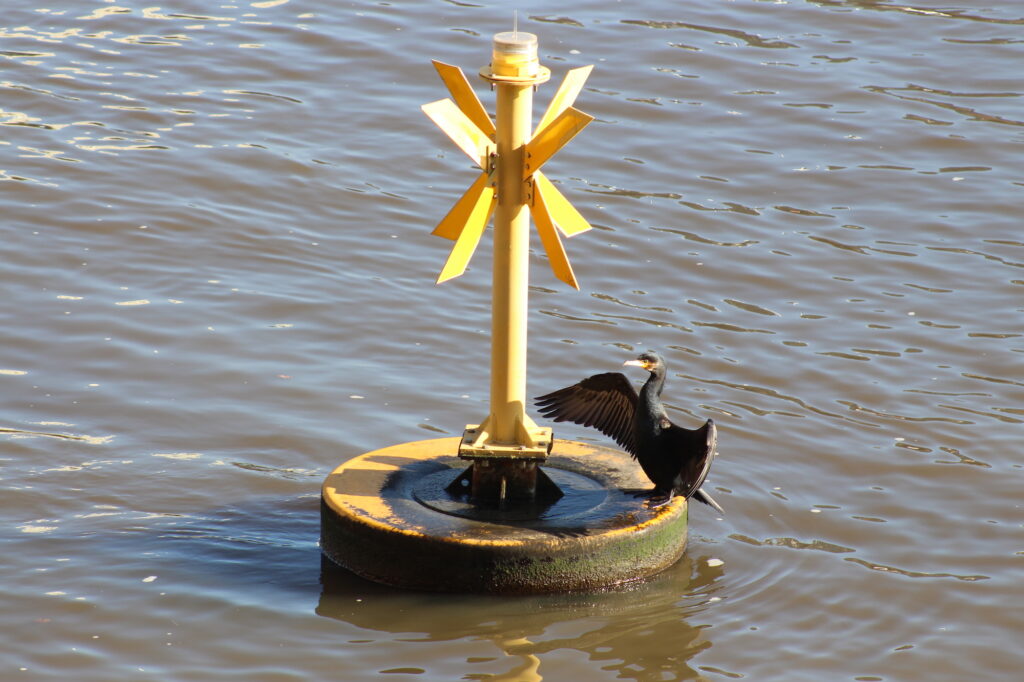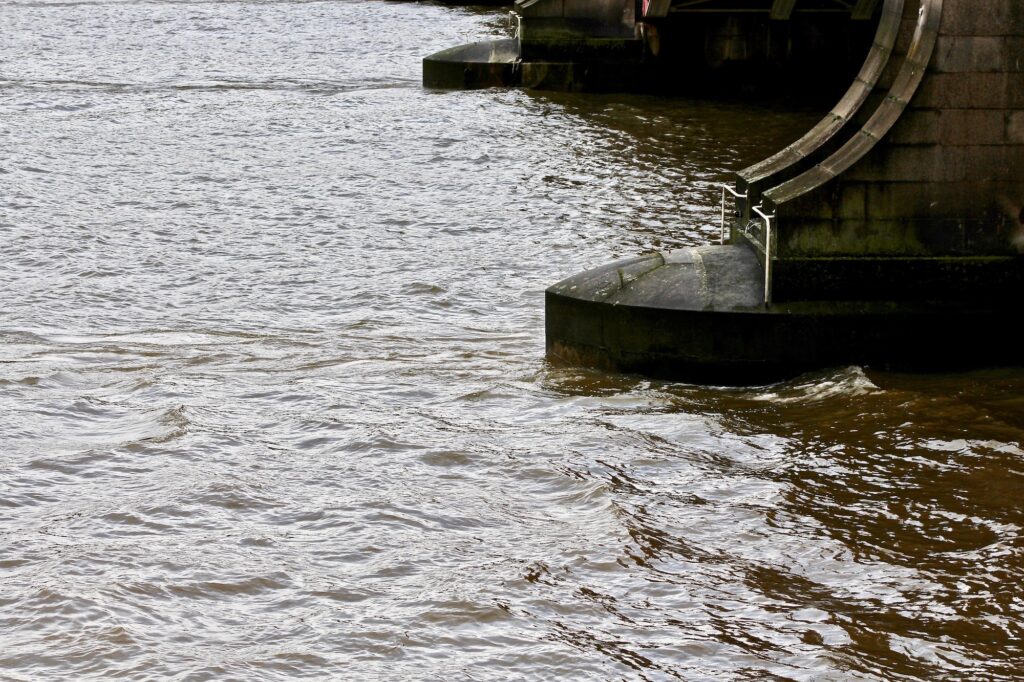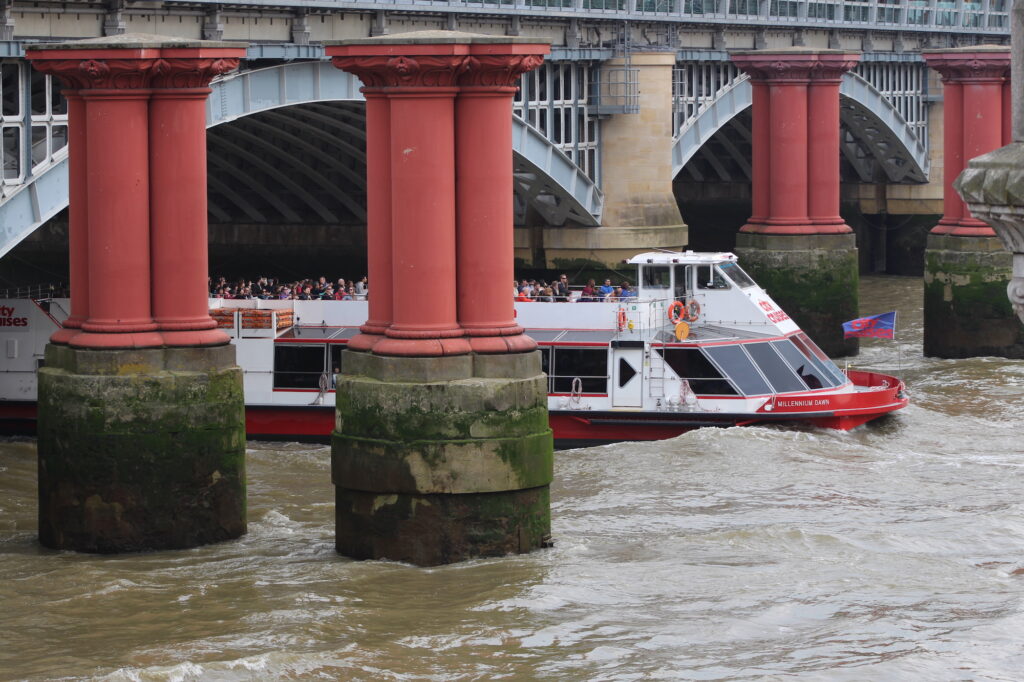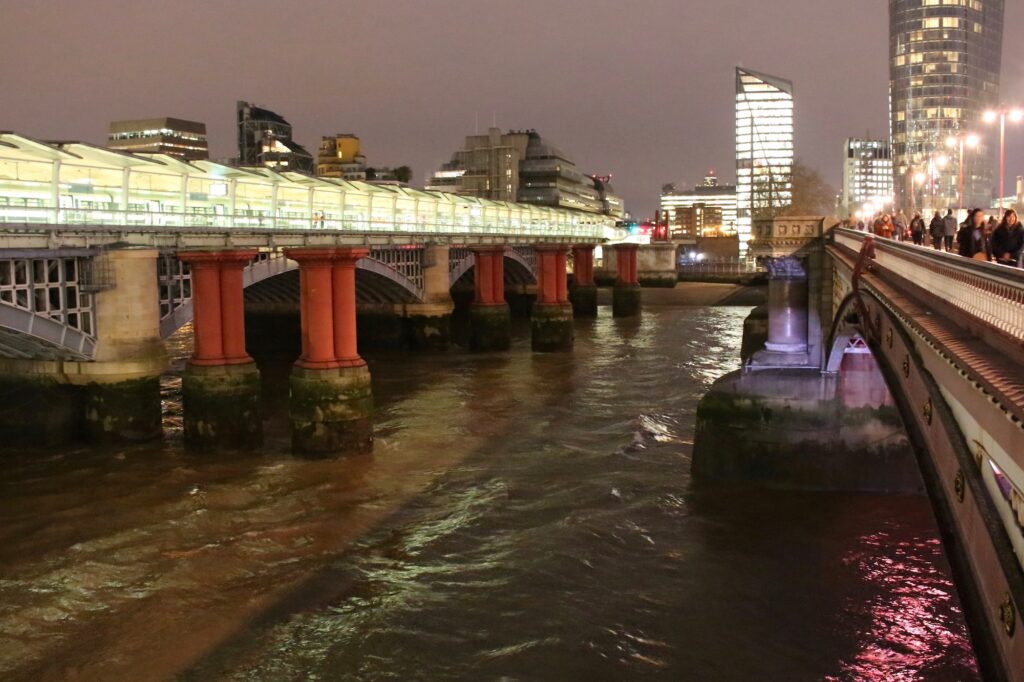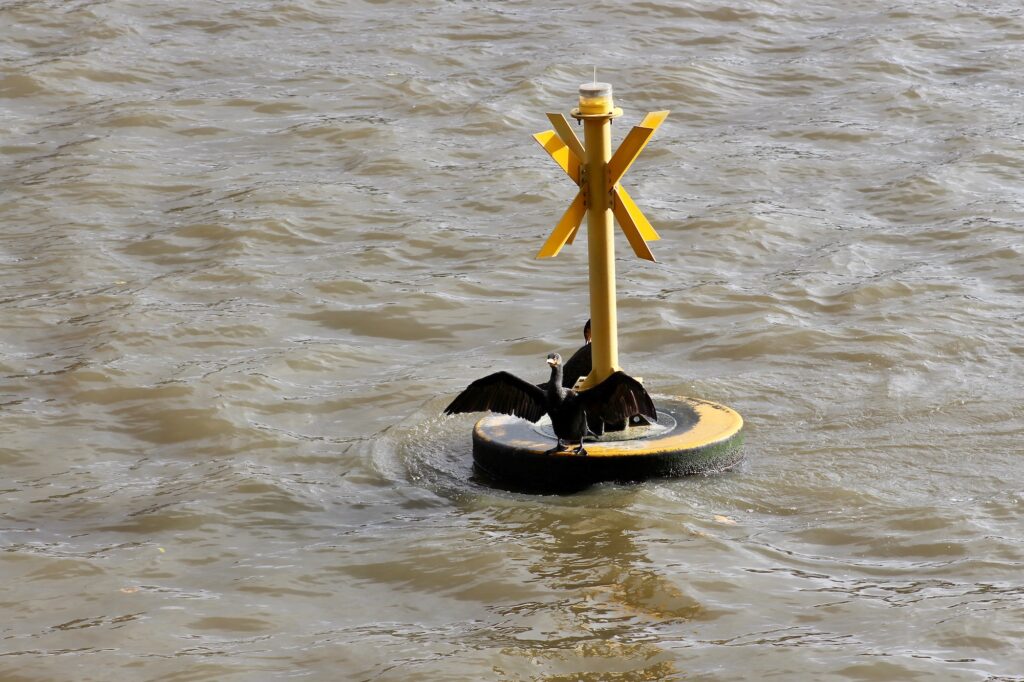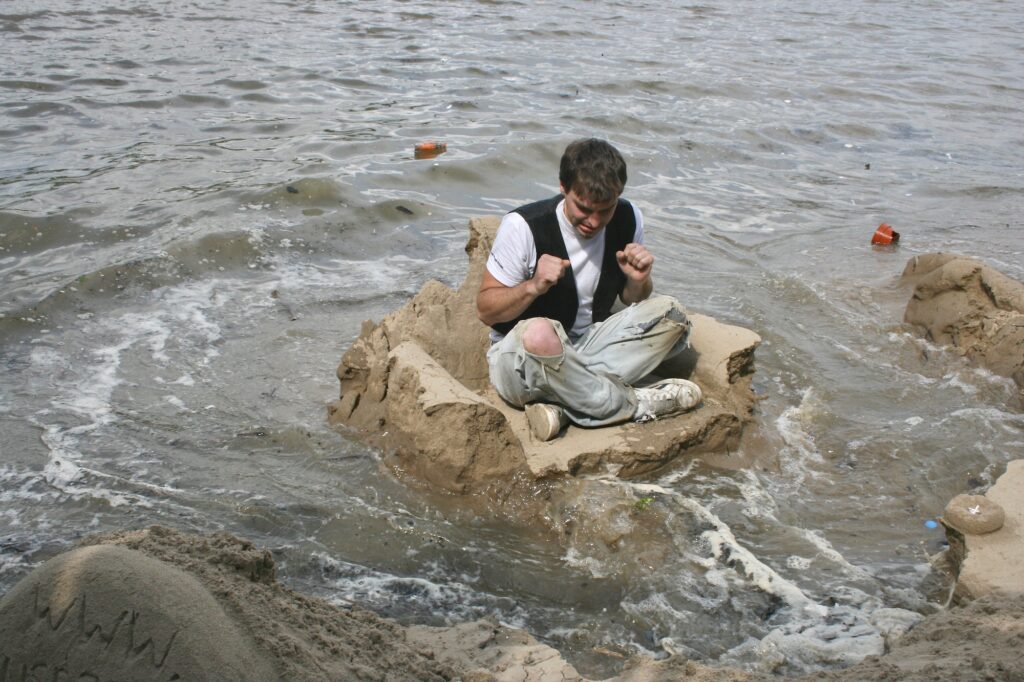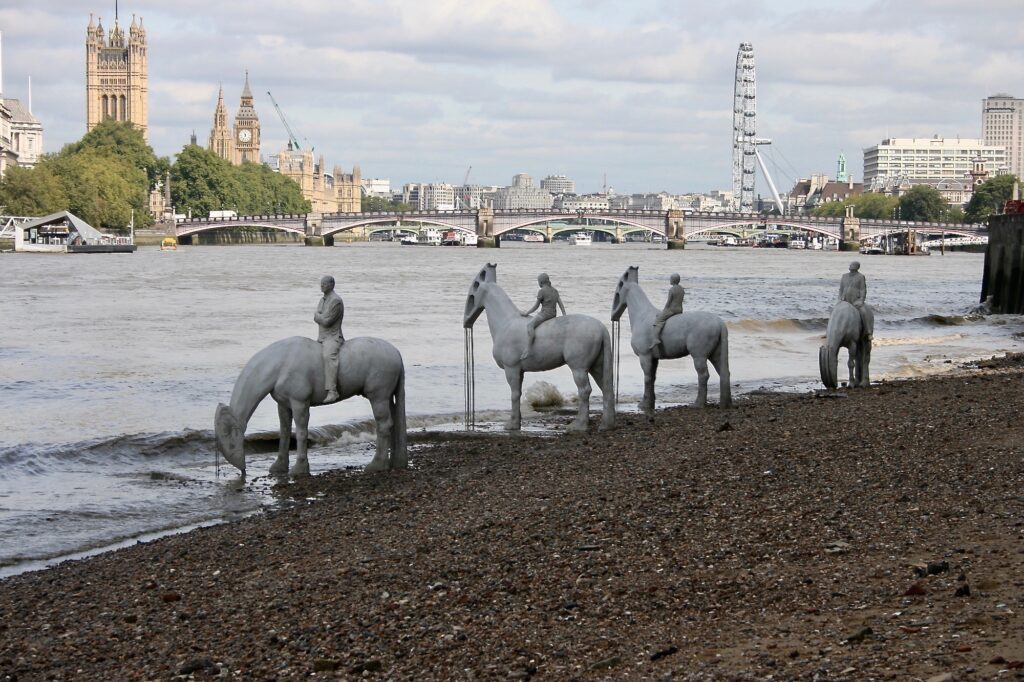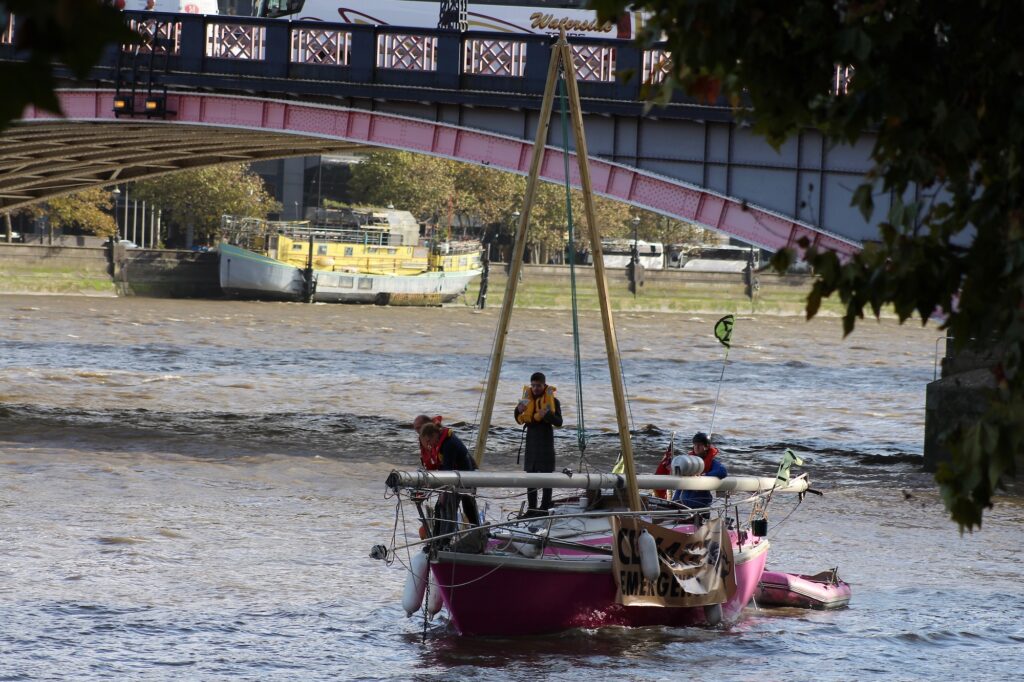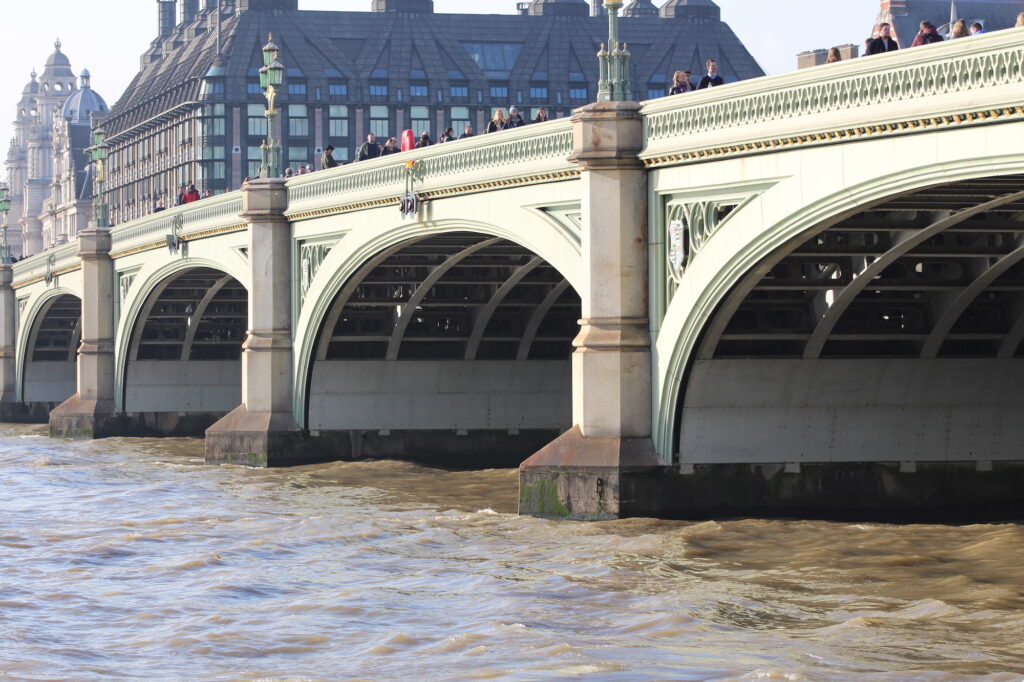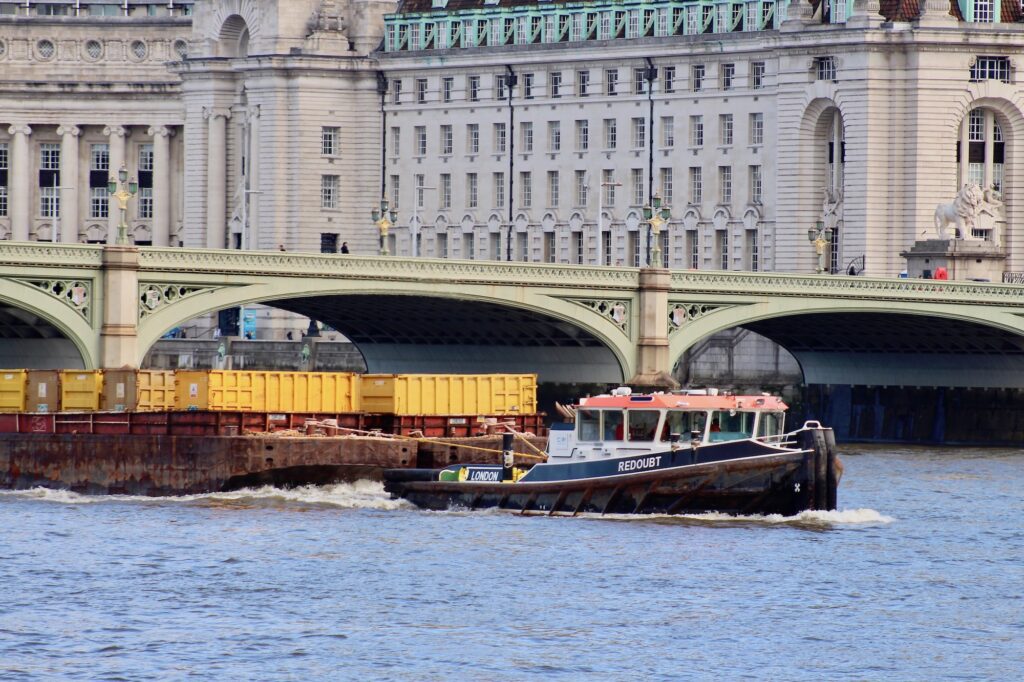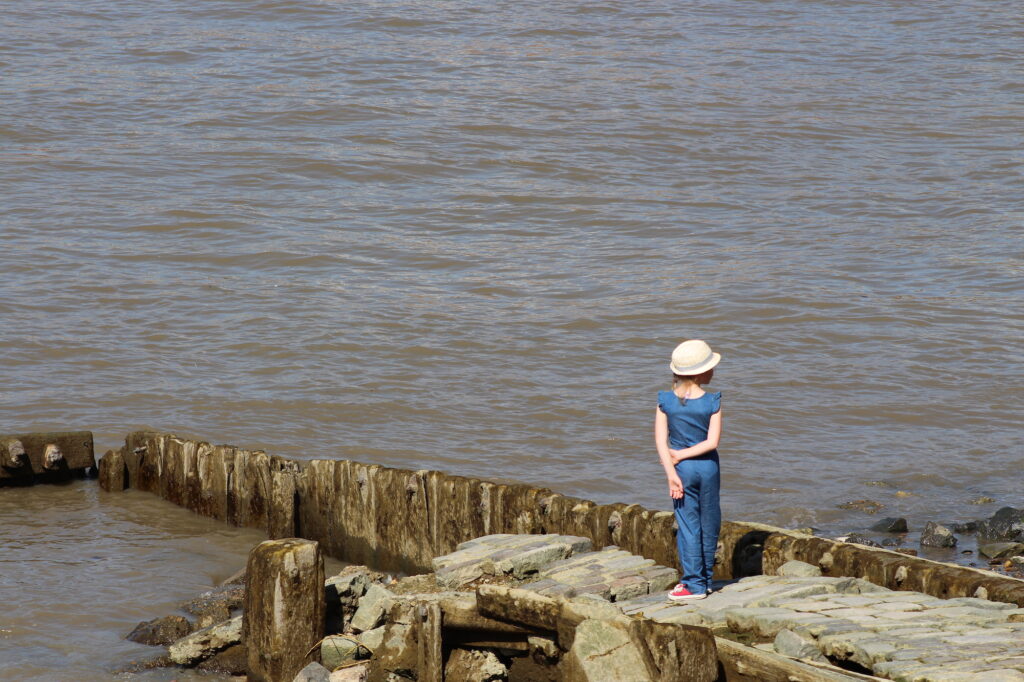“When the lions drink, London will sink…”
…so the much quoted saying goes. A saying that, without finding its origin, you’ll see quoted in guide books and all over the internet. However, I was told by Ben, Waterman and Lighterman of the river Thames, that the rhyme was used by Thames Watermen and “it’s been said for many years by guides on sightseeing boats.” There are further lines with slightly different wording but this last one has a punchy ring of authenticity: “When the lions are ducked, London is f…looded.”
The bronze lions’ heads, each holding a mooring ring, were sculpted by Timothy Butler in 1870 as a decorative finishing touch to the embankment built by Joseph Bazalgette over his newly created London sewer. They line stretches along both sides of the Thames Embankment in central London.
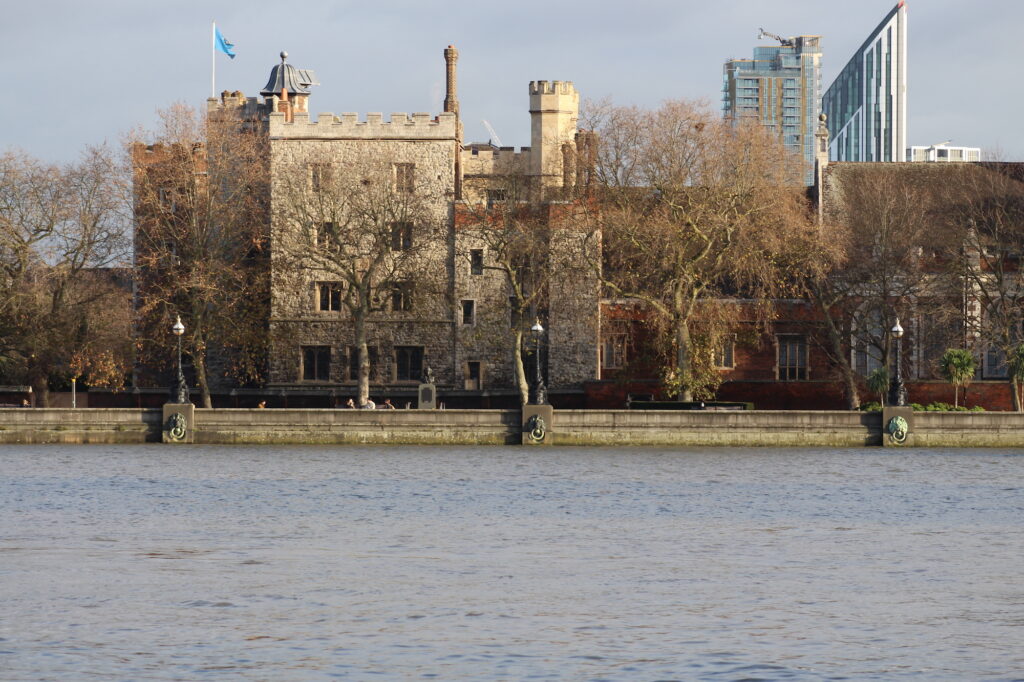
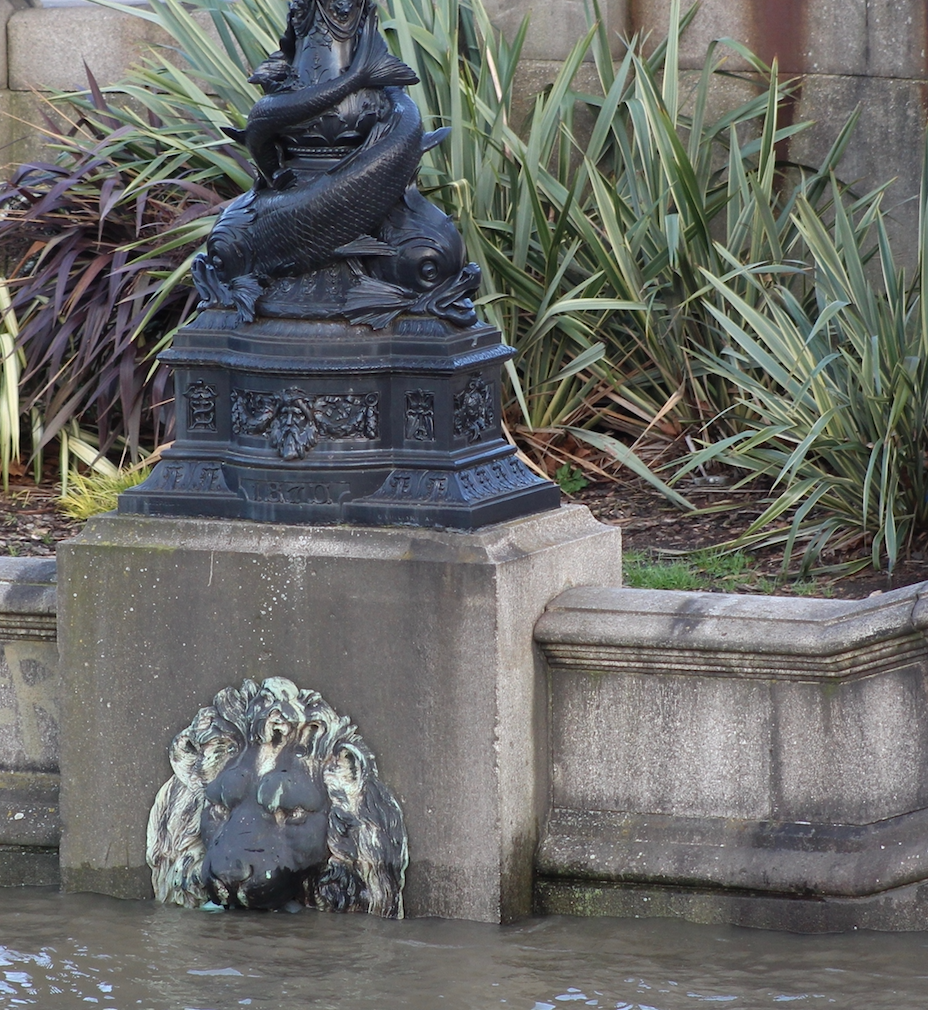
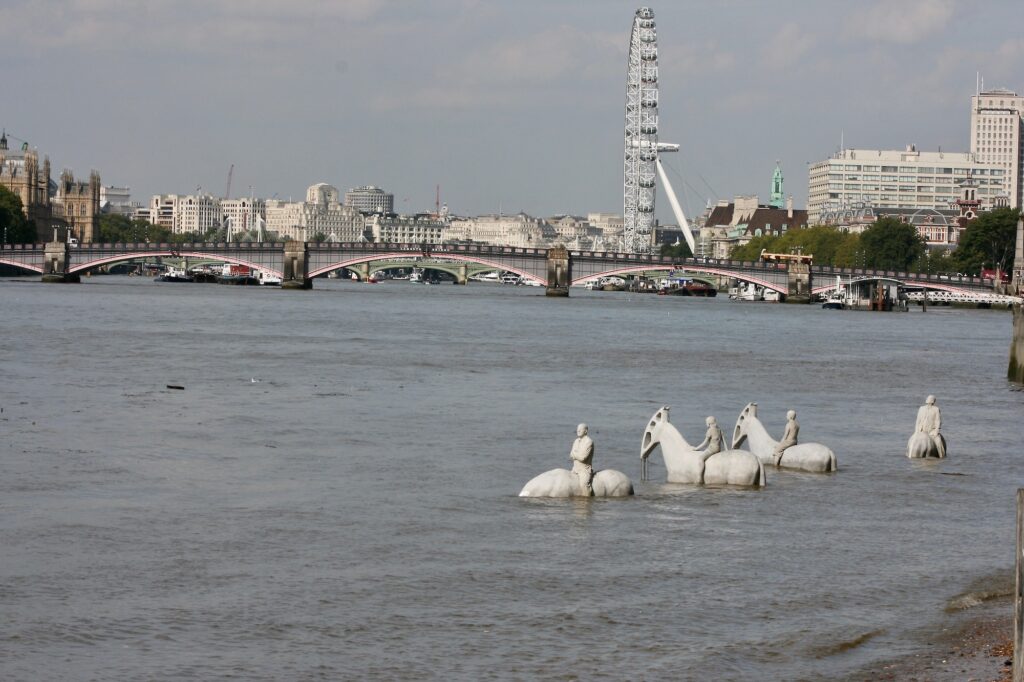
As mentioned in my earlier piece Ebb and Flow on the movement of Thames tides, the deCaires Rising Tide sculptures remained defiantly in place for a month, at times almost completely submerged by the highest tides.
The Riverside Cafe and the Tamesis Dock Bar, are two of the Thames-side venues from which you can enjoy a close encounter with the river at high tide. Of course both have exceptional views over some of London’s most famous sights but there is that extra frisson when, so close to the water, you feel afloat.
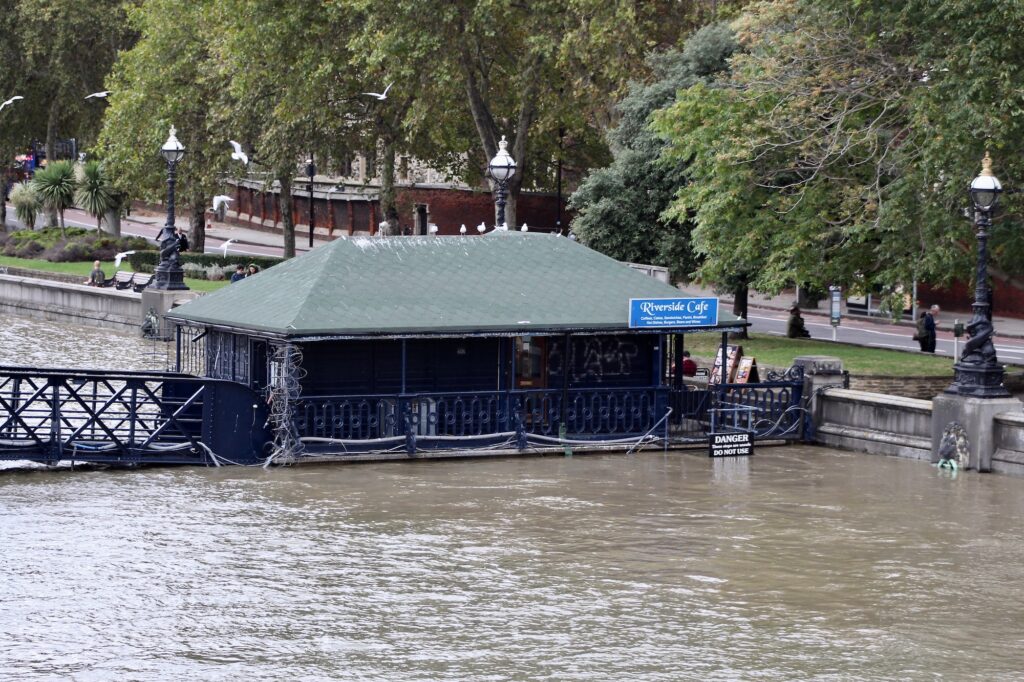
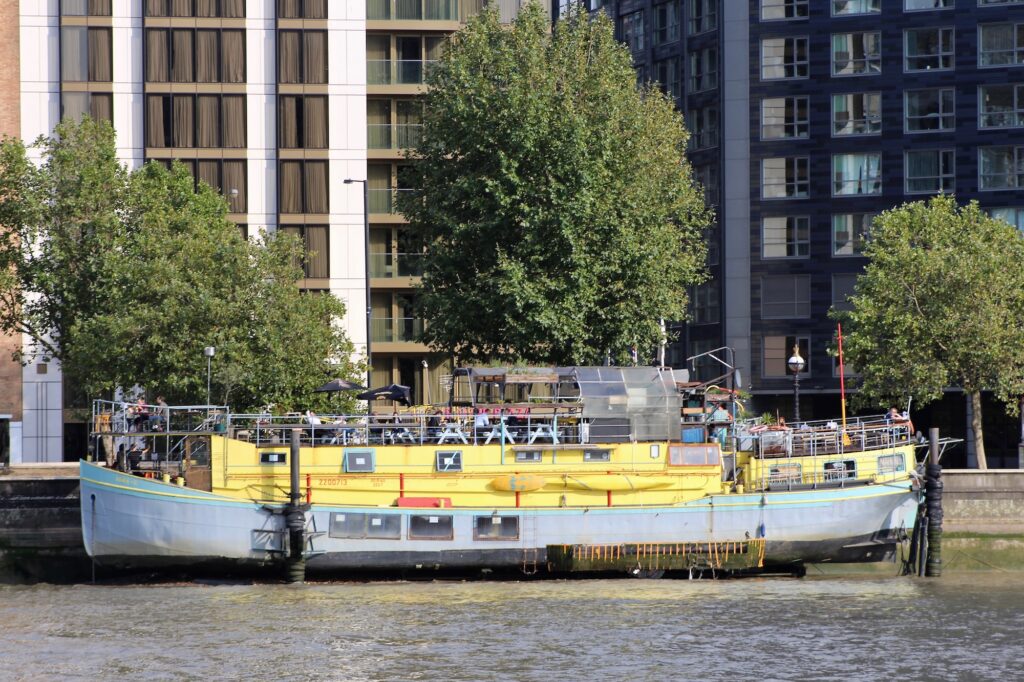
However, the lovely 18th-century Bull’s Head pub at Chiswick unfortunately doesn’t float and in December, 2019, a combination of heavy rain swelling the downstream flow and a high tide driving upstream, raised the water level over the window ledge. The window held firm but there was seepage through the brickwork below. Yet General Manager Barbara Smith is philosophical and takes it all in her stride. She has a particular affinity with the Bull’s Head as not only does she appreciate its history – there has been a tavern on that site for over four hundred years – but her great grandmother worked there in 1905.
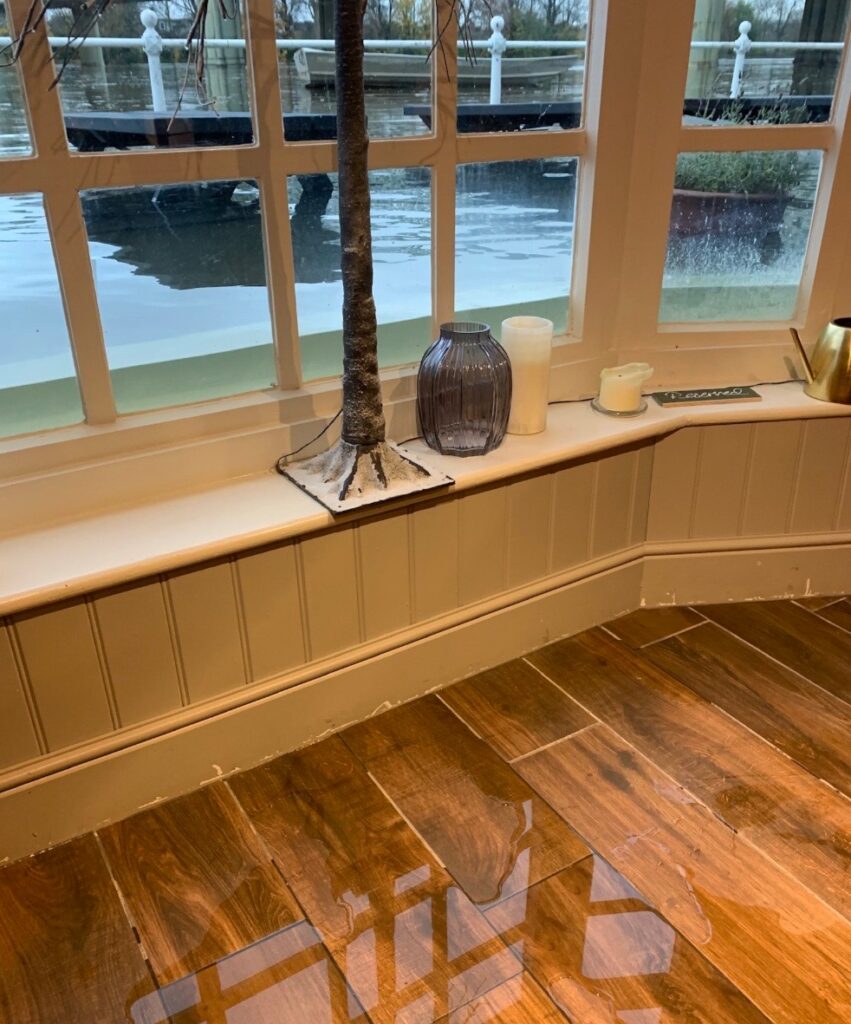
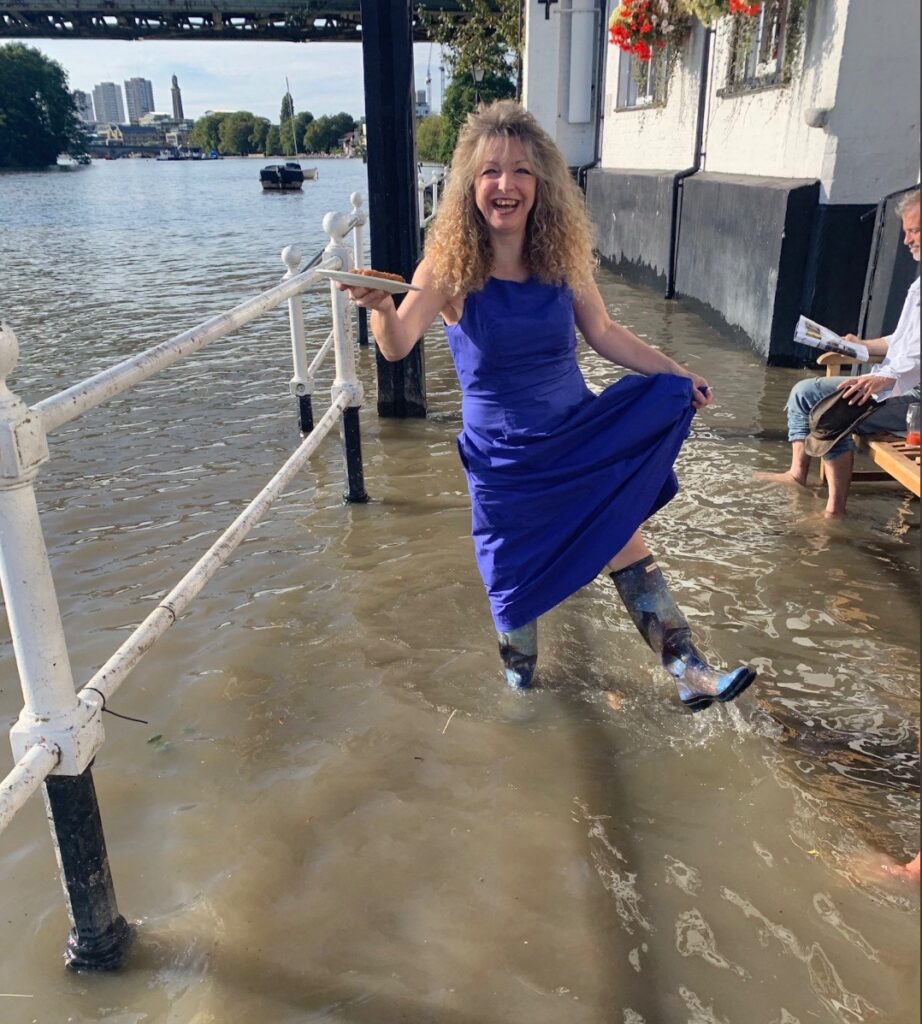
People living close to the river overlooking stretches of the Thames that flood regularly during high spring tides, are used to it. Ruth Wadey, artist, photographer, and weather watcher for the BBC, is an acute observer of both river and clouds at Twickenham, capturing some memorable moments.
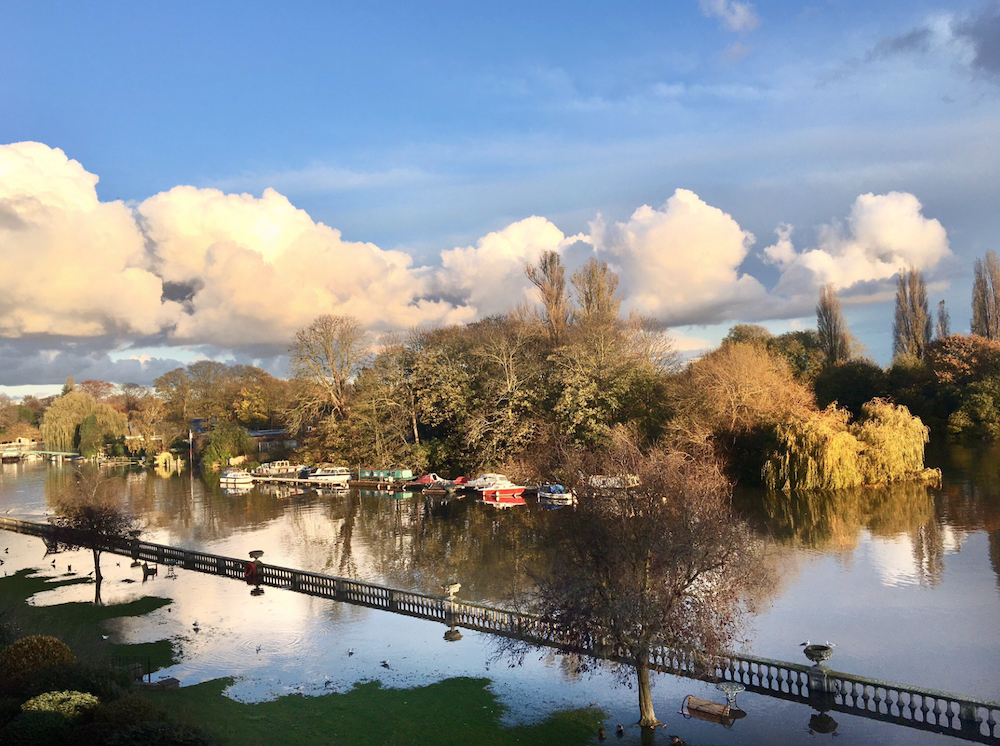
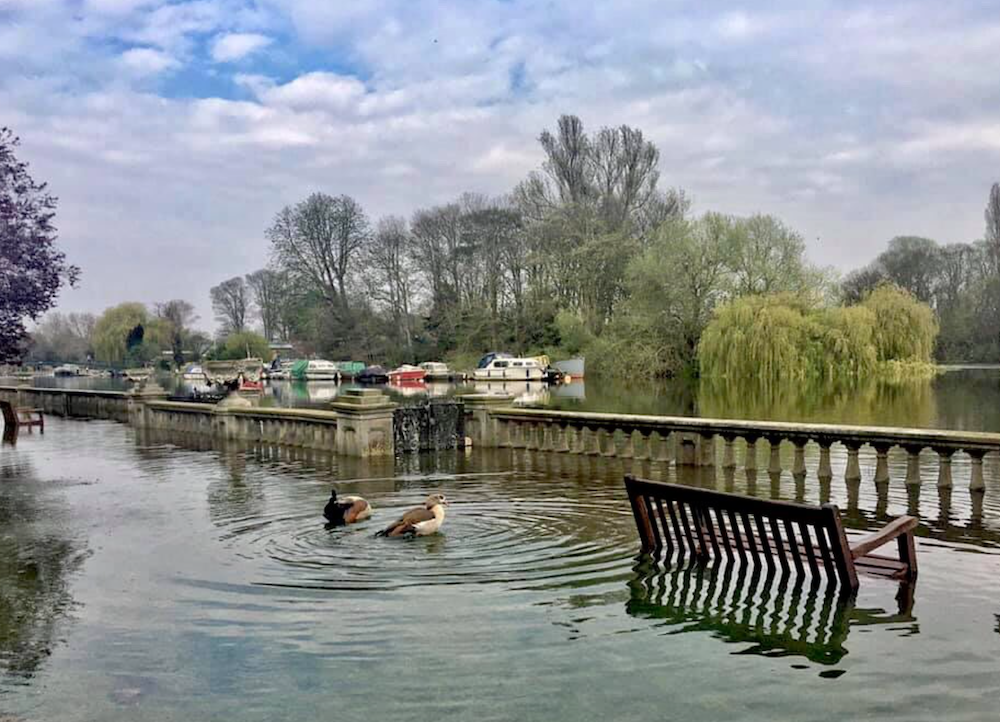
Anywhere along the stretch of the river at the risk of flooding, you can watch the inexorable rise of the water during a spring tide. Of course London is now protected by the Thames Barrier, first operational in 1984, but flood alerts can still be issued for low lying roads and paths between Putney Bridge and Teddington Weir when it has not been judged necessary to close the Barrier, as no property flooding is expected. However, warns Flood Forecaster Alan, “Don’t park in roads vulnerable to flooding.” But the warning is not always heeded.
My childhood friend Clare Risoe who lived in Putney before the Barrier was built, confesses: “I’m afraid, being young, we used to watch with some amusement, distraught owners coming back to find their cars full of stinky water, or swept elsewhere by the force of the water’s flow.” She remembers how “walking back to Ruvigny Mansions along Putney Embankment at high spring tide could mean paddling, or even wading, through the overflowed river water to reach the front entrance, wisely built raised from ground level.” She remembers too, the surreal effect of a high tide “when watching football at Fulham’s ground Craven Cottage, she could see the sails of boats gliding past above the hoarding”.
High spring tides can also cause problems for river traffic, specially if their timing is slightly out. Last year, no less than three Thames clippers, were trapped temporarily unable to pass under Westminster Bridge. I have also seen tugs getting into difficulties there and having to wait for the water level to drop.
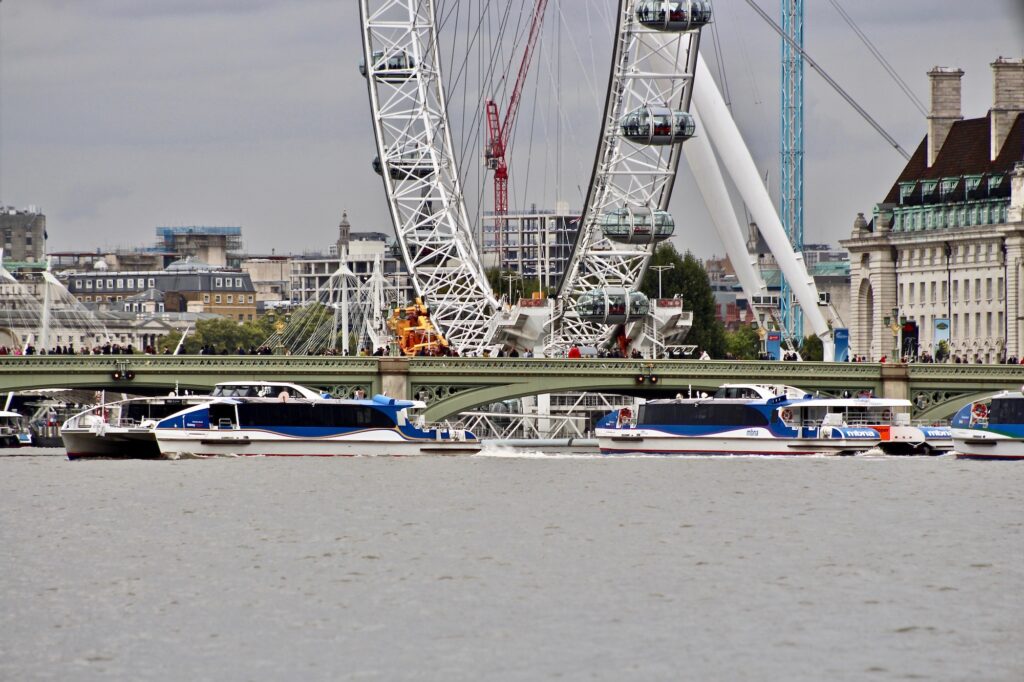
But tides can rise even higher, causing damage and loss of life rather than temporary inconvenience. Over the centuries the centre of London was regularly subjected to flooding, and to see how dreadful conditions were for people who lived in these areas Victorian London is a sobering read. An excellent article by John Kelly on The great 1928 flood of London explains how that flood, the worst since the record-breaking flood of 1881, broke through and over the river’s defences. He writes: “Worst affected were the slums on the Westminster side of Lambeth Bridge, where ten of the fourteen victims lost their lives.” There was also widespread damage to property both there and in the City, which took many years to restore.
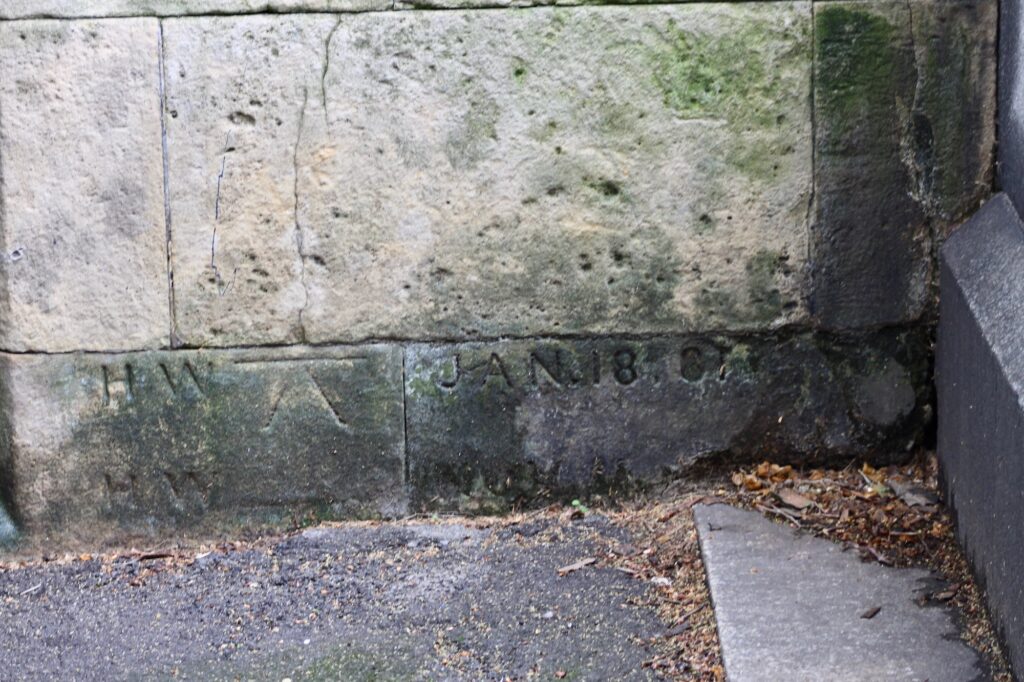
London escaped major flooding in the devastating North Sea Floods of 1953 that claimed so many lives on Canvey Island and elsewhere, but the embankments in the centre were within inches of being breached. That focussed people’s minds on the need for the protection of central London and from then began the long process of agreeing to, and constructing the Thames Barrier which was finally completed in 1984.
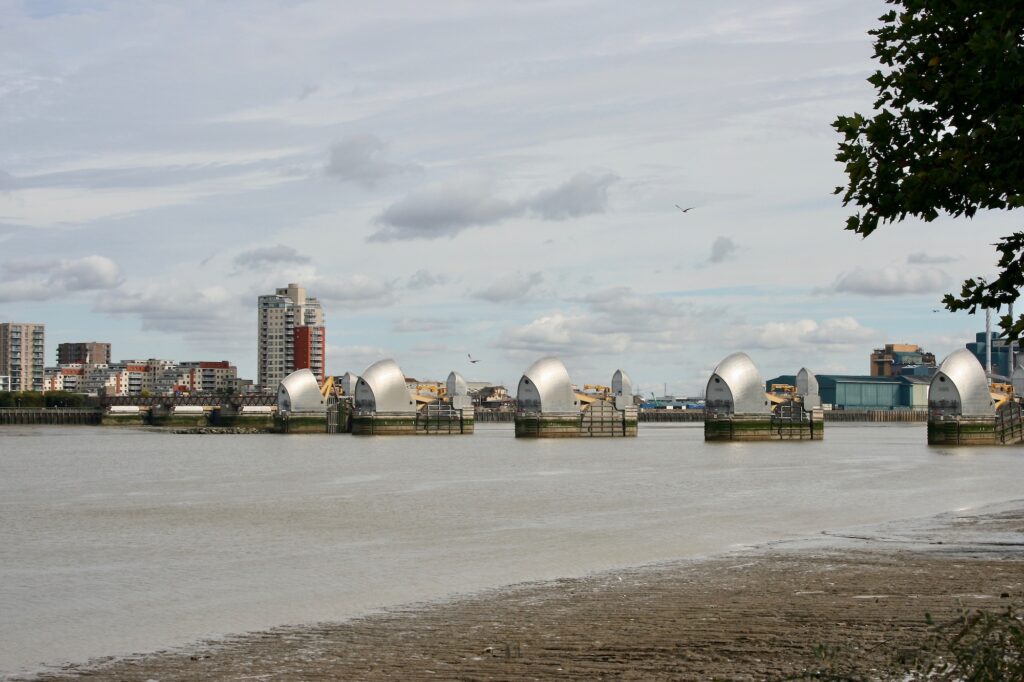
Closed only for its monthly testing, rigorous annual overhaul, and when conditions dictate, the tidal water flows freely between the piers allowing normal river traffic to pass through. When the Barrier is fully closed in its ‘defence’ position, water from the incoming tide backs up and floods the specially built overflow areas.
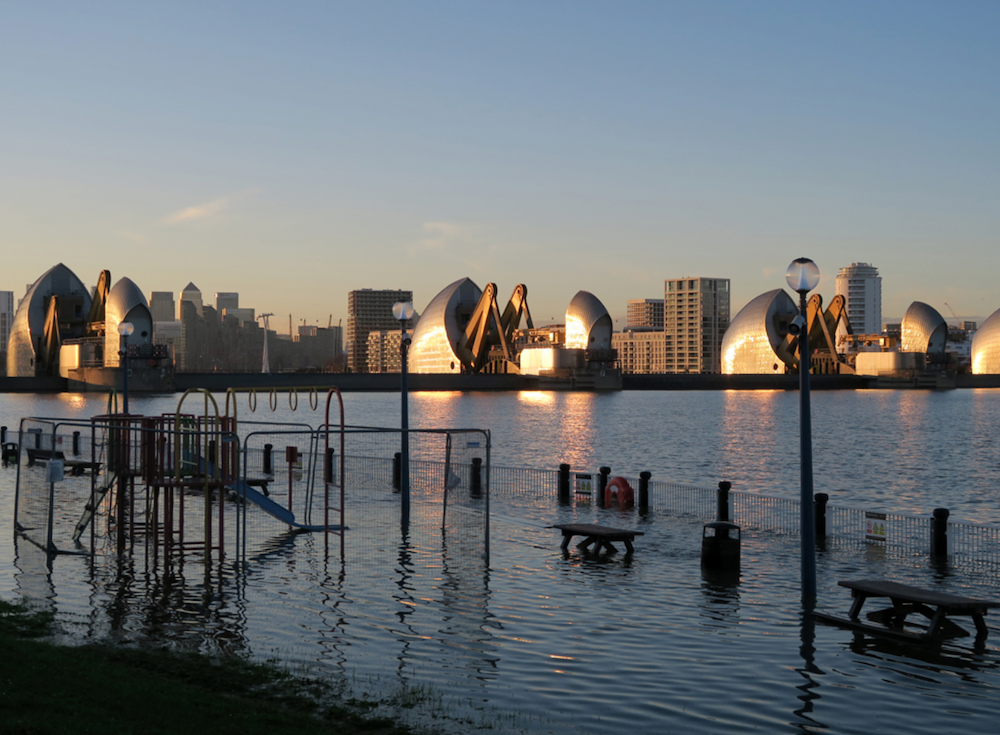
London is lucky, for the Thames Barrier is deemed sufficiently robust to protect the city and the surrounding area from flooding for at least another forty-five years.
Sources and further information
The Liquid Highway Excellent boat info site on the Thames by Ben. Follow him on Twitter @liquid_highway1
Explore Ruth Wadey’s Gallery and follow her on Twitter @ruths_gallery
Clare Risoe ceramicist. See her work ‘Shoreline’
Tamesis Dock @TamesisDock
The Bull’s Head, Chiswick, @TheBullsHeadW4
News of Thames Barrier closures on Twitter @AlanBarrierEA
Visit Ian Tokelove’s site Canoe London Follow him on Twitter @iantokelove
